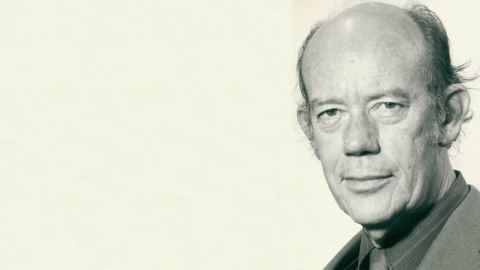Being busy, buildings and Bach: Allan Wild
27 February 2019
Emeritus Professor Allan Wild, who died earlier this month, was an influential figure in the history of modern New Zealand architecture and former head of the School of Architecture and Planning at the University.

In an obituary published in the NZIA Bulletin, his daughter Jane Wild, a former CAI Faculty Librarian, recalled a dynamic, energetic and creative man of many interests.
“Dad summarised his interests as ‘being busy, buildings and Bach’. He said that architects, like painters, do not retire. My oldest friend emailed me this week describing Dad as an idiosyncratic patriarch. He was! If you add idiosyncratic Patriarch and Being Busy, Buildings and Bach you have a biographic haiku. It sums Dad up well.”
Allan graduated with a BArch from Auckland University College in 1951. From 1945 to 1952 he was a member of the Architectural Group, Group Construction Company and Group Architects - he was one of the signatories of the Group’s constitution in 1946. The Group received the Institute of Architect’s Gold Medal in 2001 in recognition of “the enduring quality and influence of their work” and “the honesty, integrity and enthusiasm with which it is infused”.
Allan practised in Wellington from 1952 until 1969, when he was appointed to head the School of Architecture and Planning. He held the post until 1993.
As Jane Wild wrote, her father was an architect who had education “flowing in his veins”, so it was no surprise that he made a home at the University of Auckland’s Architecture school for 24 years.
Three of his seven children, Max, Bruce and Adam, are all architects. His grandson Sebastian Clarke graduated from the School in urban planning and is now at the Ministry of Culture and Heritage.
Jane Wild remembers her father as an original thinker. “This quality, allied with his enjoyment of making, meant that creativity burst forth in many dimensions. He favoured a fresh approach to architecture and design; in the 1970s he proposed air bridges to cross Queen Street to take the pedestrians away from their cars.”
He was a maker, who understood materials and had the confidence to build things himself. He played the piano, clarinet and saxophone, arranged music written for one instrument for another instrument, and sang and conducted.
“Our legacy is his love and pride in us and the inspiration he gave us. His wider legacy is the example of a life of engagement and generous contribution.”
Senior Lecturer Bill McKay was a student at the School in the late 70s early 80s, and recalls the time as a period of great change in society and consequently architectural thinking.
“Allan presided over that and allowed a great deal of freedom and experimentation to happen in the studios and allowed for a liberal and humanist approach to design.
“But he also taught in the area of professional practice and instilled in generations of students, from hippies through to punks, the need for a disciplined and responsible standard when working with clients, and upholding the reputation of the profession.”
Media contact
Margo White I Media adviser
DDI 09 923 5504
Mobile 021 926 408
Email margo.white@auckland.ac.nz